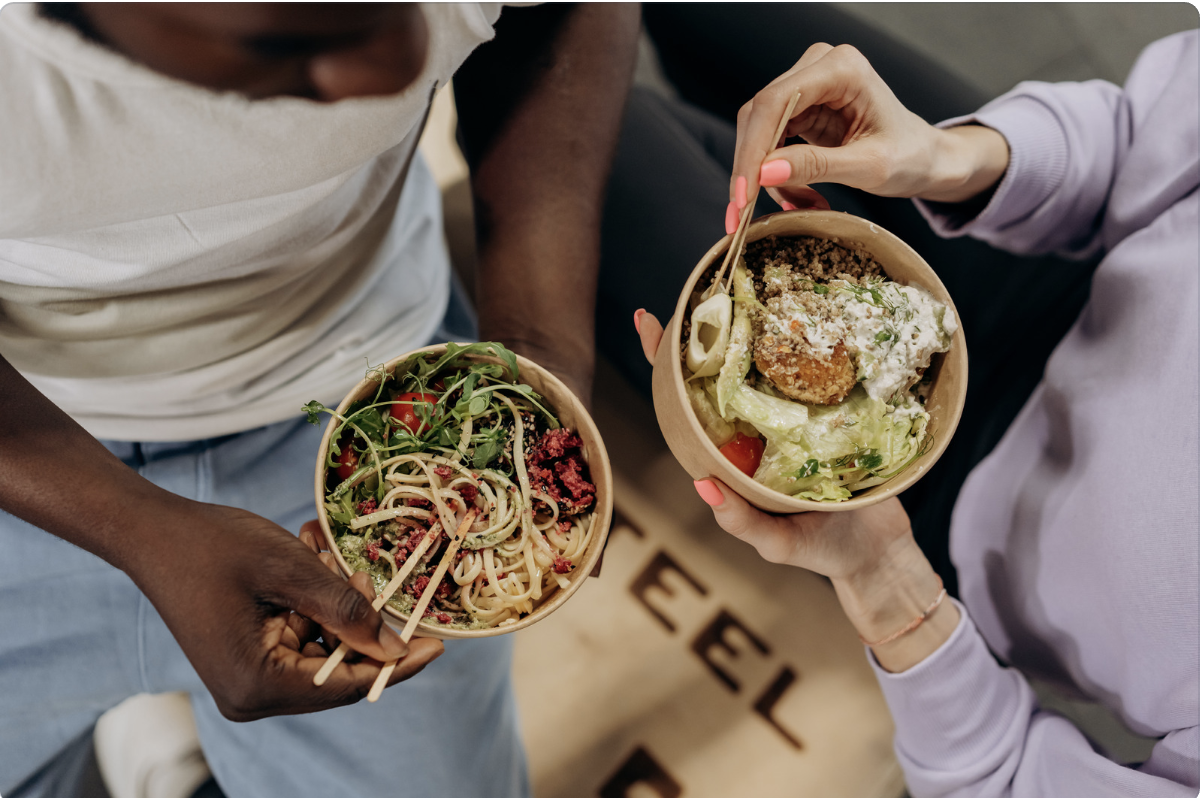
How to Cultivate Balance Through Nutrition & Mindful Eating
Does achieving balance feel close to impossible? We juggle countless responsibilities, navigate demanding schedules, and often find ourselves yearning for equilibrium in the chaos. Even in this whirlwind, one piece that can play a pivotal role in our overall well-being is nutrition.
In a world inundated with fad diets and promises of 3 day quick fixes, our aim is to guide you towards a sustainable and balanced approach to nourishing your body and mind. Learning how to build a balanced plate, along with mindful eating, are amazing first steps in discovering the impact of nutrition on your mental well-being.
What is mindful eating?
Mindful eating has been talked about more and more over the last few years (and for good reason!). But what exactly is mindful eating? In a nutshell, it’s a way of eating that focuses on our awareness and experience with the food we’re eating. Practicing mindfulness can not only help us get in tune with our hunger and fullness cues but it has also been found to increase our overall level of food satisfaction because we are eating foods that are enjoyable and nourishing to us.
Why try mindful eating?
A few benefits of practicing mindfulness around our food choices include:
-Decreased food guilt
-Increased consumption of nourishing and nutrient dense foods
-Less overeating (and binging)
-Less under-eating
-Increased confidence around food (i.e. saying yes/no to foods without guilt or pressure)
-Learning to identify your hunger and fullness cues
-Increased enjoyment and pleasure at meal times
How to start mindful eating
1. Minimise distractions
-Putting your phone down. Minimising the eating and scrolling habit.
-Eating at the table instead of in-front of the TV
-Leaving your desk at meal times
2. Ask yourself, ‘what sounds good and what will make you FEEL good’?
-For example, if you’re wanting fruit, but you know you won’t be eating a meal for a while, honour your hunger by enjoying a piece of fruit, but add some fat and/or protein like nuts or cheese beside it to keep you satisfied and feeling good until your next meal.
-Avoid skipping meals and aim for balance at most meals (i.e. protein, fats, AND carbohydrates). It’s difficult to eat mindfully when we’re under-fueled or feeling ravenous.
3. Assess your hunger/fullness before, in the middle, and after your meal (see hunger scale at the end of this article!)
4. Reflect on your meal time
-How do you feel physically and mentally after your meal? Did you eat enough? Are you satisfied with your food choice? Did you eat past fullness? If so, were you distracted? Did you feel like you had to clean your plate? Or was the food just that yummy and you consciously decided to eat past fullness?
-Reflection can help you identify where you can bring more awareness to your meal and you can bring this knowledge to your next meal! Don’t beat yourself up if you ate past fullness, or maybe didn’t eat enough so you overate later in the day. Instead, use this experience as a chance to learn.
Remember that mindful eating doesn’t happen overnight. It can be difficult to slow down at meal times and learn to listen to our bodies when we have been so used to rushing from one task or event to another, leaving a few minutes to grab something, put it in our mouth, and keep pushing forward. Show yourself some kindness and patience and aim to implement just one step at a time.

Balancing your Plate
Another powerful tool in finding balance through nutrition is the art of building a balanced plate. Ensuring each meal is well balanced will help you:
-Feel full and content
-Leave your meal physically and mentally satisfied
-Lean into your body’s natural hunger cues and build body trust
Here’s the secret sauce:
Not every meal you have will be perfectly balanced, and that’s okay! Whether you are cooking at home or out to eat with friends, when in doubt, you can think of these key components and try to create balance when possible.When you’re able, strive for balance by including the following:
Protein
Aim for about ¼ of your plate protein (typically 20-30g), but can be more depending on your body’s specific needs and goals. This can be animal protein or plant based protein!
Fats
Fat will help to keep you full and satisfied. It’s likely already in your meal through cooking oils, animal protein, or sauces. If not, try adding some. (Hello avocado!)
Starchy carbs
Aim for ¼ plate to be starchy carbs
Color
Aim for ½ your plate to be veggies and/or fruit. Think of the rainbow when choosing fruits and veggies! Pro tip: try choosing a different color veggie or fruit at each grocery store visit.
Satisfaction (this is key!)
Make sure your meal includes food you actually ENJOY! If not, you’ll leave the meal feeling unsatisfied (even if you’re full), and may lead to overeating later.
We’re here to help you nourish, thrive, and rediscover balance!
Check out the Hunger and Fullness Scale:
Overly Hungry
-Painfully hungry, dizzy, weak
-Very hungry, low energy, headache
Hunger/Fullness Sweet Spot (this is where we aim to be!)
-Hungry, stomach growling, ready to eat
-Starting to feel hungry
-Neutral, not hungry or full
-Slightly full, no longer hungry
-Satisfied but comfortable
Overly Full
-Slightly uncomfortable, full
-Uncomfortably full
-So full that you feel sick, in pain

